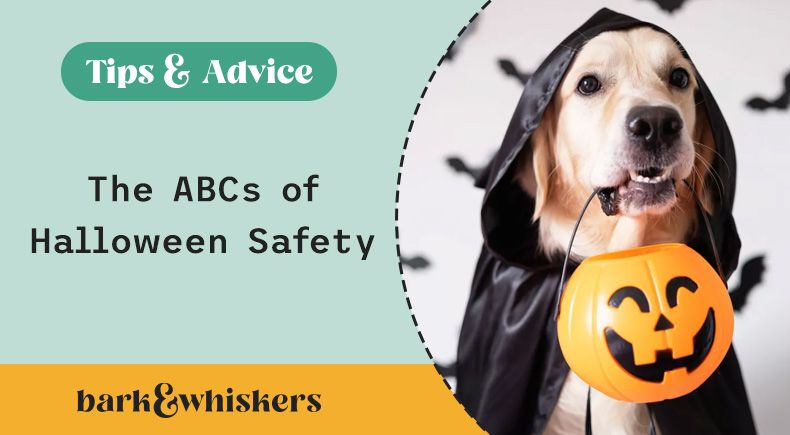The ABCs of Halloween Safety
While today is a fun holiday for many humans, it can spell trouble for your furry family members if you let your guard down. Not only will many pets go missing today, the slightest ingestion of any of these increasingly popular 'healthy' treats could lead to kidney or liver failure, or worse.

STORY AT-A-GLANCE
- Today is Halloween, and while this is a fun holiday for many humans, it’s important to safeguard furry family members from potential holiday harm
- Most pet parents are aware of well-known Halloween threats like chocolate candy, but there are several other potential hazards you may not have thought of
Happy Halloween! For most households, today’s festivities will mean costumes and candy and fun times for the humans in the family. When it comes to furry family members, however, it means taking care to avoid the many pet hazards associated with All Hallows’ Eve, so that everyone on two legs and four has a great time.
9 Halloween Pet Threats
- Open doors — Animal shelters and rescue organizations typically experience an increase in lost pets in the days following Halloween. The front door opening and closing for trick-or-treaters, coupled with the over-stimulation of the evening, can create an opportunity for a frightened or adventurous pet to run off.
Make sure your pet's ID tag and/or microchip database information are up-to-date and take necessary precautions to prevent him from slipping out the door and into the night. - Elaborate pet costumes — If your pet isn't costume-averse (many dogs and most cats are), just make sure whatever you dress her up in:
- Is lightweight to avoid overheating
- Doesn't confine or restrain her movements in any way
- Is free of any adornments she might be tempted to chew off and swallow
- Trick-or-treaters and other visitors — If you tend to host lots of costumed kids and/or adults at your house on Halloween, be aware that a constantly ringing doorbell, strangers at the door, and a general mood of excitement can create an over-stimulating environment for your pet.
Some pets become anxious, fearful, and aggressive when their normally quiet, predictable evening is anything but. If your pet tends to find commotion at the front door or visitors stressful, it's best to secure him in quiet, safe spot before the action starts. - Chocolate and other candy — Chocolate is toxic to both cats and dogs, and the darker the chocolate, the more toxic. It contains a caffeine-like stimulant substance that when ingested by your pet can cause vomiting, diarrhea, hyperactivity, racing pulse and even seizures. Make sure all your family members and guests, including children, understand the importance of keeping chocolate away from your dog or cat.
Candy in general is a problem for pets because it's loaded with sugar and fat, which can lead to serious gastrointestinal (GI) issues and pancreatitis. While many pet owners are aware of the dangers of chocolate, there are other types of sweets that also pose health risks for canine and feline companions, so a good rule of thumb is to keep ALL Halloween candy out of the reach of pets. - Goodies containing xylitol — Xylitol (aka "birch sugar") is a hugely popular sugar substitute that is being added to an ever-increasing number of consumer products, including peanut butter, candy, gum, mints, and baked goods. A small amount of xylitol can cause a rapid and dangerous blood sugar drop in dogs, as well as acute liver failure. Xylitol's effect on cats is less, but cats should also not ingest it.
- Raisins and trail mix — Some well-meaning people hand out those tiny boxes of raisins instead of candy on Halloween. Or small bags of trail mix containing raisins and/or chocolate candy such as M&Ms. Unfortunately, raisins are toxic to dogs and cats and can cause kidney failure even in very small amounts. Chocolate covered raisins pose an even bigger risk.
If you'd like to offer your pet a special treat on Halloween, try these pet-safe, easy-to-prepare pumpkin almond cookies:
- Candy wrappers — Halloween candy isn't the only health threat for dogs and cats. Empty candy wrappers smell like what was in them, which can entice your pet, and ingestion of foil and cellophane wrappers can cause a life-threatening bowel obstruction. It's very important to stress to children in particular the need to keep all candy wrappers out of the reach of pets.
- Candles and glow sticks — Candles, including the small ones inside Jack-o-lanterns, are fire hazards. You don't want your kitty wandering across a table or shelf decorated with lit candles, nor do you want your dog getting too frisky around a carved pumpkin with a candle inside. Make sure all these types of fire hazards are well beyond your pet's reach.
Glow sticks and jewelry are very popular, and pets — especially cats — have been known to chew on them. The substance that creates the glow is phenol, which can leak out and burn your pet's fur and tongue. Choking on small pieces is another hazard. - Scary human costumes — Some pets become very fearful or aggressive at the sight of certain Halloween costumes. If you suspect your dog or cat might be one of them, I recommend taking precautions to keep your pet and trick-or-treaters safe.
Bottom line: Common sense and a little preparation will ensure your four-legged family member wakes up safe and healthy tomorrow morning.










